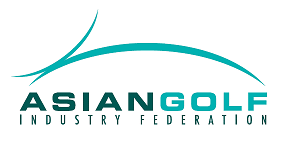Rounds 4 Research Raises Record Sum
Kansas, United States: For the second year in a row, the GCSAA Foundation’s Rounds 4 Research programme broke recor...

Orlando, United States: Moisture control specialist Capillary Concrete has announced that its revolutionary new Capillary Hydroponics turfgrass growing environment is now on sale.
The system uses the capillary properties of Capillary Concrete to enable both drainage and irrigation from below and to precisely regulate the moisture content of the turf’s rootzone.
“The system divides the turf into two areas of equal size. A control basin automatically oxygenates and pumps or drains water between the two areas on a regular schedule. The system is powered by a small solar panel and the water levels in the turf profile can easily be adjusted,” said Martin Sternberg, inventor and CEO at Capillary Concrete, an Associate Business Member of the Asian Golf Industry Federation.
Capillary Hydroponics enables massive increases in gas exchange below the top four inches of the rootzone – the area which conventional aeration methods do not adequately service. Because carbon dioxide molecules are heavier than those of oxygen, this root-damaging gas is hard to remove from deep in a profile but the system pushes out the heavier molecules and sucks oxygen into the turf profile by raising and lowering the water table. It also delivers optimal levels of nutrients directly to the rootzone.
Capillary Hydroponics has been in use for over a year in a number of trial sites.
At Pompano Beach Golf Club in Florida, a test green has been in place for just over a year. Scott Zakany, CGCS, President of Cypress Golf Management, which runs the course, said: “The results on our test green are truly astounding. Since we installed this test green, we have seen a huge increase in our roots and huge decrease in our water usage, because the green is completely irrigated and fertilised from below ground, which means we don’t lose water to evaporation and we don’t have to spray fertilisers all the time. This product is going to revolutionise the way we manage and maintain our courses.”
In September/October 2018, Capillary Concrete built a new tee box at Hawk’s Landing Golf Club outside Orlando, incorporating the Capillary Hydroponics system, along with superintendent Josh Kelley’s team and contractor Double Eagle Golf Works. The system divides the tee box into two areas, with a layer of Capillary Concrete under the rootzone. Two air lift pumps, powered by a 55-watt solar panel, move water inside the closed system.
“It is a trial site. We aren’t doing anything special to it,” Kelley said. “We have run no overhead irrigation at all, except to water in two applications of herbicide. The tee itself has performed superbly – zero hotspots, no disease issues, no wet areas.”

Sternberg said: “After almost a year, we can say that it has used 65 per cent less water than a similar sized, conventionally irrigated tee box, and we think that we can tweak the system to get that figure to 85 per cent. I started experimenting with tees five years ago in Sweden, primarily as a sub-surface irrigation project.
“But the addition of a hydroponic moving water table – which we can do because of the strength and capillary properties of our product – is what makes this a game-changer. We know we are getting up to 6,000 per cent more gas exchange in the rootzone in comparison to convention methods of aeration, and it is obvious that will have a massive impact on turf health.
“This is akin to what happens naturally in a seaside links environment, where you typically have a very low water table – but critically, it moves with the tide. That promotes a gas exchange. The best way to promote gas exchange is to push it with a water front – which is what we can do using Capillary Concrete.
“The hydroponic industry is 25-30 years ahead of us in the turfgrass industry in terms of understanding how to optimise plant root oxygen exchange, but it hasn’t been physically possible to build large outdoor structures for hydroponics without a product that performs as Capillary Concrete does.
“If you compare the cost of building, to use Capillary Hydronponics is slightly more expensive than building a push-up or California tee, but comparable to USGA specification construction.”
Kelley said: “I really think in markets where water is scarce or expensive, this will change the way we do things in the golf business. I’m delighted that we, at Hawk’s Landing, were one of the first to get to try it out.”
Kansas, United States: For the second year in a row, the GCSAA Foundation’s Rounds 4 Research programme broke recor...
Florida, United States: With some 200 exhibitors from 25 countries and registered attendees representing more than 80...
Melbourne, Australia: Jasper Stubbs claimed an impressive come-from-behind victory in the Asia-Pacific Amateur Champi...
